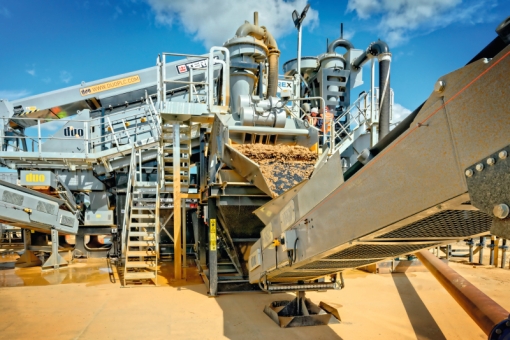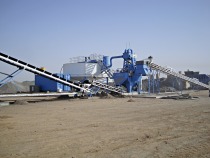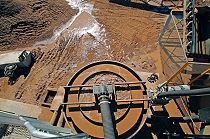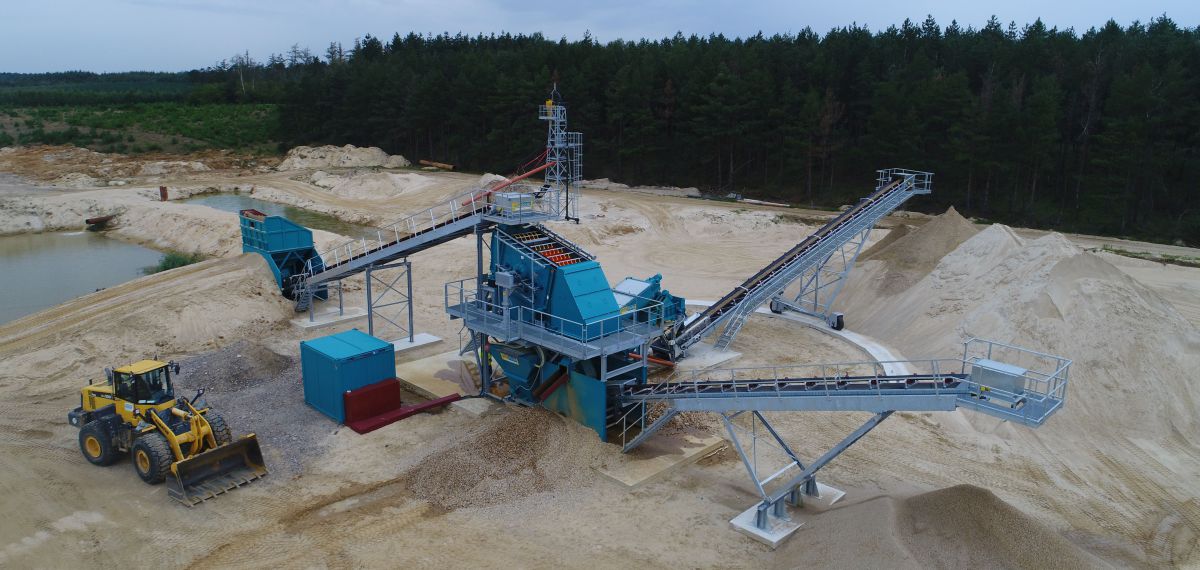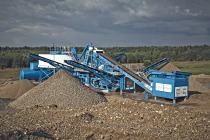Terex Washing Systems: Fifteenth anniversary
The Terex Washing Systems (TWS) Finesmaster™ (FM™) BucketWheel range was first introduced to the aggregates industry in 2000 and is still proving a popular solution with sand producers who want a reliable, efficient, durable sand plant offering longevity, reliability and ease of maintenance – all characteristic of the BucketWheel system. Sand producers have worked with this technology for decades and with the added technology of the cyclone system, this allows producers to reap the recovery benefits.
The benefit of the BucketWheel system is the ability to significantly reduce the amount of coarse material coming into contact with the pump and cyclone as it is fed directly from the BucketWheel to the Dewatering screen. It is this coarse material that causes the most wear on rubber lined parts, however the BucketWheel system counteracts this as only the fine sand comes into contact with the pump and cyclone. This benefits the customer with reduced wear costs, reduced power consumption and ultimately reduced processing costs.
Justin Donnelly, TWS Applications Specialist and TWS’s longest serving member (45 Years), played an integral role in the development of the FM™ Bucketwheel. Commenting on the range he explained: “When we looked at how we could produce two grades of material in a practical and economical way without adding a second pump and larger cyclones to the FM™ BucketWheel we turned to the tried and tested method of BucketWheels. BucketWheels are typically operated in the range of 0.5 to 1.3 rpm via a planetary drive. The slow speed coupled with the robust materials of construction ensure that the extremely low connected power requirements and maintenance costs are a fraction of those associated with fitting a second pump. Overall no other technology compares to the long term low cost operation of the FM™ BucketWheel.”
Sand reserves and the lack of them was effectively the driving force behind the demand for this efficient plant design. TWS global distributors and customers required a system that would allow them to capture more sand and eliminate losses to the tailing ponds as well as for customers who were trying to process more challenging materials with higher percentages of silt. Quarry owners also wanted to produce a drier product which could be loaded directly off the belt onto a lorry, reducing the handling process. A number of ideas were proposed from the research and development team at the time, the concept of combining the BucketWheel, cyclones and a dewatering screen on one chassis proved to be the most effective solution to meet the customers’ needs (Fig. 1). The first FM™ Bucketwheel produced was the FM 100BW for a site in Northern Ireland. After running and testing the plant for a number of weeks it was apparent that this new plant would be set to revolutionize the sand washing industry.
The first plant installed outside Ireland was for a customer in Toronto/Canada. The customer had previously used a sand screw set up and the FM™ Bucketwheel would replace this to produce silt free dry sand. Canada still remains a key market for TWS in 2015.
Over the last 15 years the FM™ BucketWheel remains to be an effective solution for customers, with many recent installations around the globe including USA, The Middle East, Russia, Scandinavia, Australia, Turkey and Ireland. The European market, in particular, selected the BucketWheel system for many of their applications, especially in manufactured sand applications (Fig. 2). Customers want to reduce loss of saleable product to their ponds and produce dry sand(s), which is a key benefit of the FM™ BucketWheel. The combination of BucketWheels and cyclones offers very low levels of maintenance as rubber liners last for long periods. The FM™ BucketWheel plant has the added benefit off processing two sands simultaneously. The split is made on the aggregate rinsing screen’s bottom deck with two slurries sent to the FM™ BucketWheel via two 250 mm mining spec hoses. The BucketWheels process the coarse sand product, while the cyclones process the fine sand. These two sands are dewatered on a split dewatering screen to produce two grades of sand which can be blended before stock piling via the two grade blending chute.
TWS have recently applied modifications to the plant to further enhance its capabilities and effectiveness, creating an option, whereby four cyclones are fitted, this complete fines recovery unit has the ability to capture material down to 38 µm. This plant is proving very popular in manufactured sand applications where sand down to 38 µm can be used in concrete and mortar sands. The BucketWheels help to reduce the wear on the centrifugal pump, pipework and cyclones. The FM™ BucketWheel range employs Linatex G4-Cyclones which offer excellent efficiency and fines recovery characteristics. The dewatering screen has been developed to produce more energy and greater dewatering capability. Serviceability and access have also improved with galvanized access stairs and platforms now standard.
Garry Stewart TWS Applications Team Lead commented “The FM BucketWheel continues to be one of key sand plant solutions in many regions around the globe. This is mainly due to the BucketWheels performing up to 90 % of the work, which ultimately lessens the load and wear on the rubber-lined pump and cyclones. Manufactured sand applications are becoming more and more popular with our customers as natural sand and gravels reserves are being depleted. The FM™ BucketWheel is the plant we recommend for these specific types of applications, which have proven effective time and time again. The plant’s ability to produce two sands in an efficient and simple method is a major benefit for many of our customers wanting to produce both mortar and concrete sands. The FM™ BucketWheel can process a wide variety of applications in a range of capacities, including 60, 120 and 200 t/h models, as well as 120 and 200 Super Fines models (Fig. 3).

